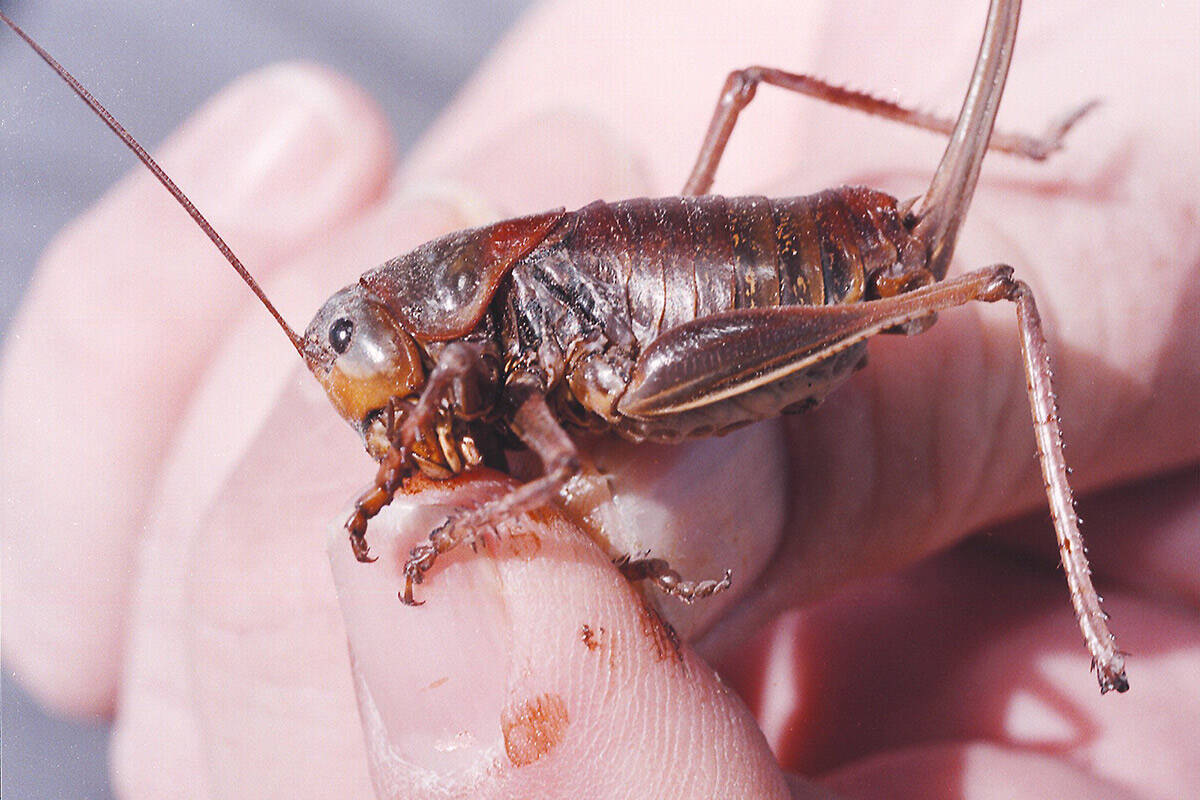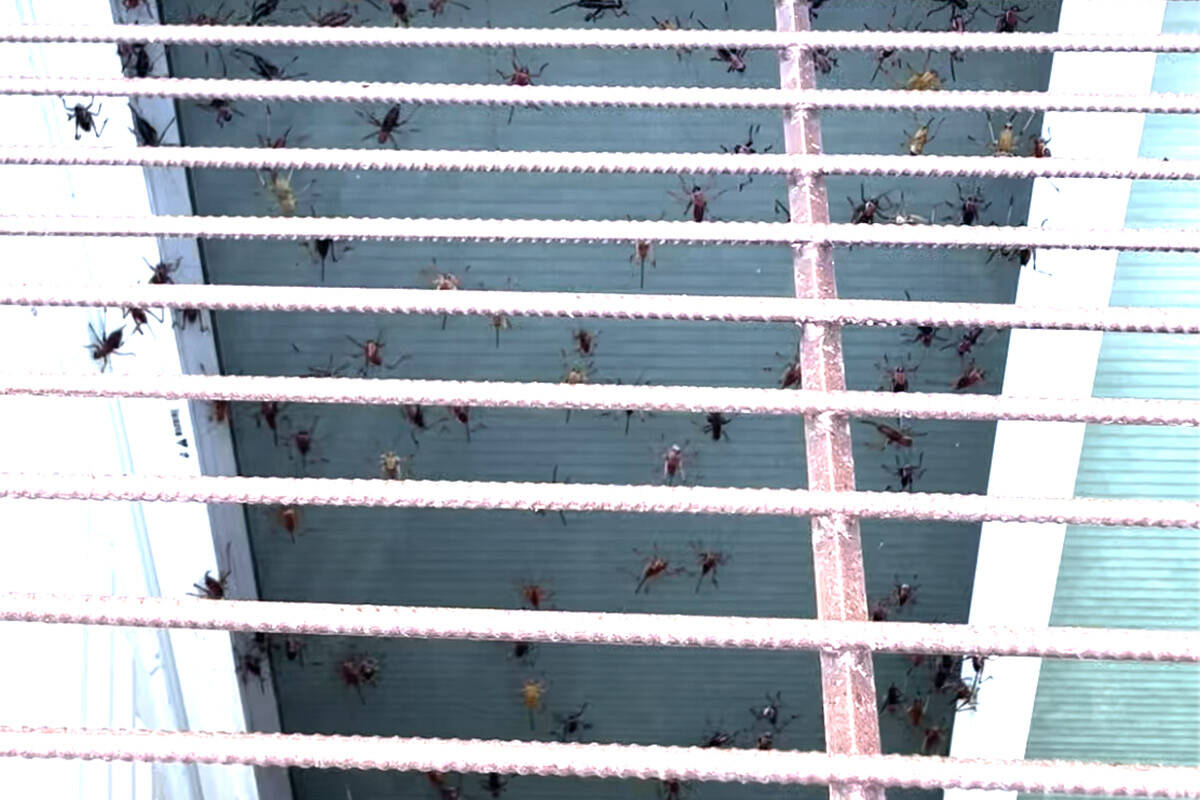Mormon crickets swarm northern Nevada towns
Ding-dong! It’s the Mormons — but not the ones you’re probably thinking of.
Mormon crickets have hatched in Northern Nevada, and bands of bugs are hopping across Elko County to coat the sides of buildings, blanket roadways and generally annoy residents.
The insects earn their name from when Utah settlers belonging to the Church of Jesus Christ of Latter-day Saints had their crops ravaged by the tiny, black insects. Thankfully, seagulls ate many of the bugs and saved the settlers in an event called the “Miracle of the Gulls.”
Mormon crickets have come out in strong numbers during the spring and summer months every year since 2019 as part of a larger, regular cycle of population booms and busts with the species, according to Jeff Knight, state entomologist with the Nevada Department of Agriculture.
Every 10 years, the insects’ population has outbreaks that last four to five years. Then, they disappear for a decade before environmental factors trigger the cycle to restart, Knight said.
When the insects lay their eggs, not all will develop. But, when there are drought conditions, some eggs will get triggered to develop, and several years of drought can lead to larger and larger population numbers.
The insects this year hatched in mid-April, two months later than normal, and are now reaching maturity. By mid-July, the insects will mate and lay eggs that will hatch next spring before populations begin to cool down for the winter, according to Knight.
The insect population is eventually brought down by natural predators like parasites, coyotes and, most famously, birds.
Knight said the last major cycle of the insects in northern Nevada was from about 1999 to 2007. Then, they vanished — until now.
“They’re a cyclical thing,” he said. “Clear back into the ‘30s, there was documented Mormon cricket outbreaks in northern Nevada.”
Thankfully for Southern Nevadans, the bugs don’t like to go south of Highway 50 and prefer to stay in the northern Great Basin area.
Knight said it’s difficult to estimate how many Mormon crickets are in northern Nevada this year due to the variety in the crickets’ group sizes and how quickly the insects move.
Nothing out of the ordinary
Mormon crickets, despite not being able to fly, can move about a mile a day. Their mobility makes it difficult for bugs to be treated with diflubenzuron, an insecticide that prevents the insect from being able to form their exoskeleton.
“Outside of Elko, we’re getting calls, and by the time we got our people there to do some treating, like four to five days later, those populations, that band of crickets, had moved on,” Knight said.
The state continually works to protect crops from cricket damage but focuses primarily on public safety issues like protecting water supplies and keeping roads safe from bug guts that can make the road slippery when wet.
“One of the problems they create on roads is one gets squished, and two or three come out to eat the squished one and they get squished, and you can actually have serious impact on the roads where the roads, especially with a thunderstorm, will get slick from the crickets,” Knight said.
Knight said anyone, including Southern Nevada residents, who spot Mormon crickets should report their sightings to the state’s agriculture department.
Still, Knight wants to remind residents that this is nothing out of the ordinary.
“I was hoping to not have another cycle before I retired,” Knight said. “Over my 37 years (as an entomologist), this was about the fourth cycle I’ve been through.”
Contact Taylor Lane at tlane@reviewjournal.com. Follow @tmflane on Twitter.






























